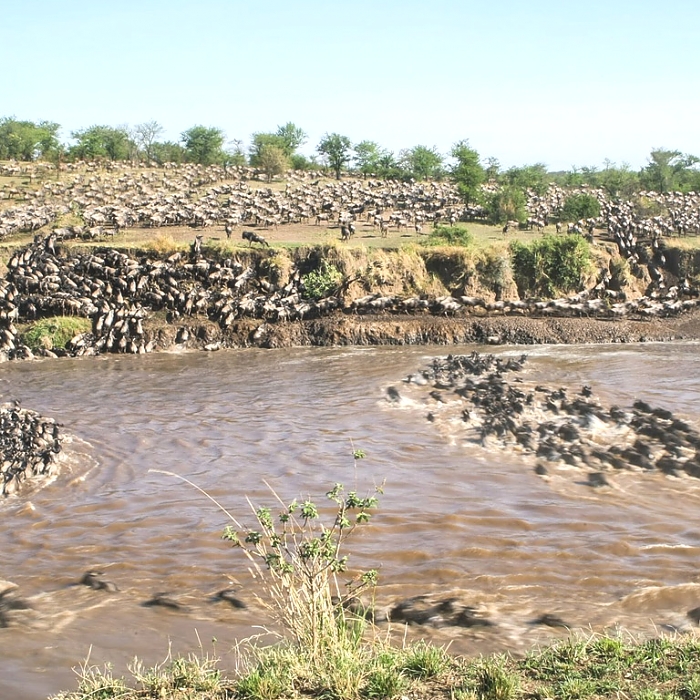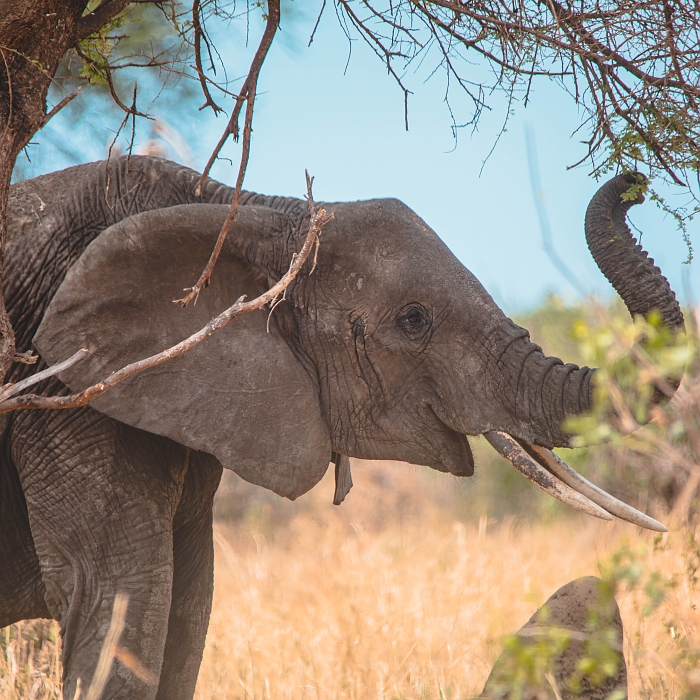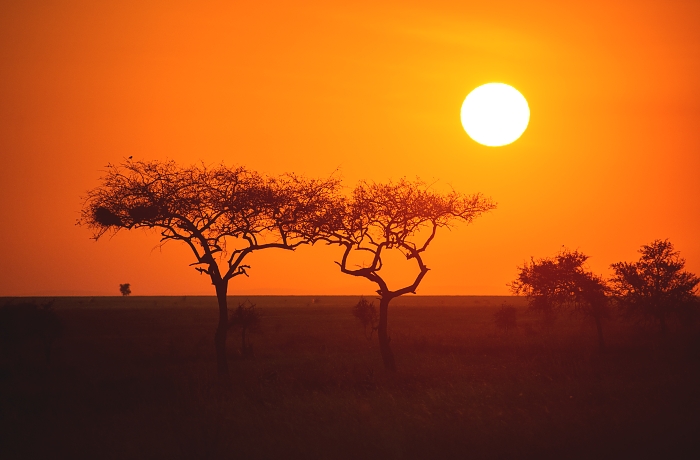Tarangire National Park
Overview
It is the most southern of the accessible park of Northern Tanzania. Name after River Tarangire, the park covers an area of 2,850 sq. Km (about 1005 sq miles). On the east bank of Lake Manyara, the Tarangire River crosses the park from north to south. Several circuits are possible. Burungi to the west (80 km), Lamarkan to the South (150 Km) Matete, along the river (60 Km) acacia trees and baobabs forests shelter animals seeking refuge near the river.
Location: The Tarangire National Park is Located on the east banks of lake Manyara, the Tarangire river Crosses the Park form north to south it's 118 Kms (about 75 miles) south west of Arusha. Getting there easy drive from Arusha or Lake Manyara following a surfaced road to within 7 km (4 miles) of the main entrance gate Can Continue on to Ngorongoro Crater and the Serengeti the park is located in a wooded steppe within an arid acacia Savannah species. The most important vegetation types include; riparian woodland, acacia tortillas parkland wetlands and seasonal flood plains, Acacia-camni phora woodland, Acacia drepanolobiam woodland, deep gully vegetation and Grassland with scattered baobabs trees.
Bird life: Bird watchers have a wide selection to see in this park, which has more than 550-recorded species, the most breeding species in one habitat in the world. The park is home to the largest bird in the world, the ostrich, and the heaviest bird, which can fly the Kori Bustard.
Wild life: During the best game-watching month, much of the park wildlife is connected in the vicinity of the Tarangire River. The Park has the greatest Concentration of wildlife outside the Serengeti ecosystem. Among other species to be seen at Tarangire are buffalo, herds of up to 300 elephant, lion, warthog, eland, the fringe eared Oryx, lesser and impala, the park is also famous for tree-climbing pythons as do its lion and leopard and abundant Bird life.
Access: The park is reached on the main Arusha Dodoma tarmac road it is 1hours 30 minites drive or 45 minute charter flight. About 85 Kms from Arusha at Makuyuni the main road up to the Serengeti and Ngorongoro branches off to the right. Continue a long the Great North Read toward Tarangire, which is Sigriposted.
To do: Guide walking Safaris; day trip to the Barabaig villages as well as to the hundreds of ancient rock paintings in the vicinity koloon the Dodoma road also visits a Maasai market and on the road to Arusha, stop by the local graft shops; jewelers spears and canes and a night safari in Tarangire.
Accommodation: One lodge, 1-tented lodge, and one luxury tented camp inside the park, 2 outside, Campsites in and around the park. (Tarangire Safari Lodge).
Highlights
Bird life: Bird watchers have a wide selection to see in this park, which has more than 550-recorded species, the most breeding species in one habitat in the world. The park is home to the largest bird in the world, the ostrich, and the heaviest bird, which can fly the Kori Bustard.
Wild life: During the best game-watching month, much of the park wildlife is connected in the vicinity of the Tarangire River. The Park has the greatest Concentration of wildlife outside the Serengeti ecosystem. Among other species to be seen at Tarangire are buffalo, herds of up to 300 elephant, lion, warthog, eland, the fringe eared Oryx, lesser and impala, the park is also famous for tree-climbing pythons as do its lion and leopard and abundant Bird life.



















